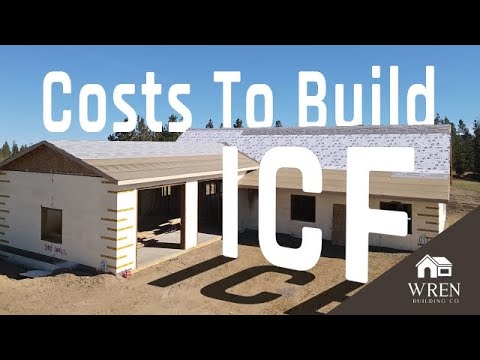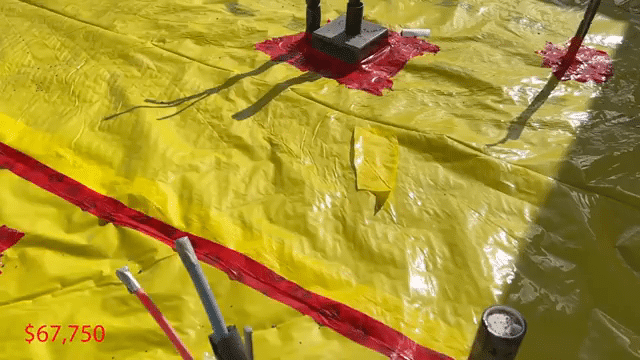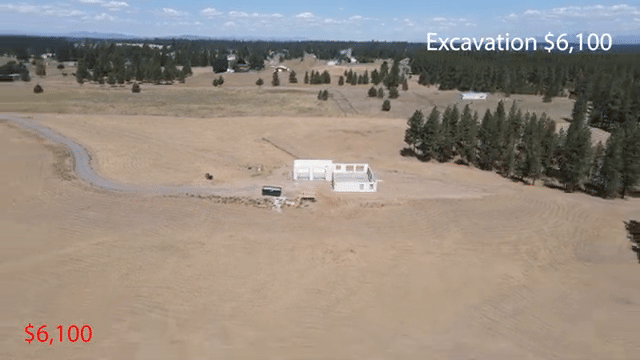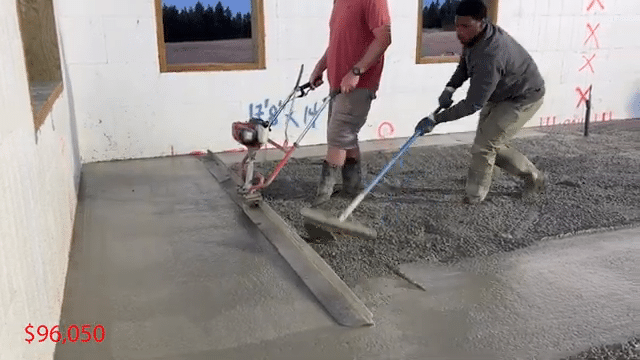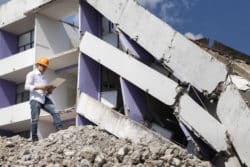Exploring the Costs of Building a Home with Insulated Concrete Forms (ICF): A Detailed Project Breakdown
Home » Construction Techniques »
In recent times, Insulated Concrete Forms (ICF) have gained prominence as a preferred construction method for many new homeowners due to their energy efficiency and robustness. Today, we are exploring the various costs associated with building a home using ICF, focusing on a current project to illustrate the expenses and comparisons with traditional building methods.
Initial Costs: Excavation and Foundation Preparation
The first stage in the construction of an ICF home involves preparing the site, which includes excavation and foundation work. For this project, the excavation cost amounted to $6,100, which involved digging out the foundation and modifying the landscape to suit the house’s placement. Following excavation, the foundation was laid out by pouring concrete footers, which are crucial as they support the load-bearing walls of the home.
Cost of ICF Blocks and Additional Materials
One of the major costs in ICF construction is the blocks themselves. For this specific project, the expense for the ICF blocks, which include only the foam component, was $23,600. The house features walls that are substantially taller than typical residential structures, particularly in the garage area, which slightly elevated the cost. Additionally, the project required a significant amount of rebar ($1,250) to reinforce the concrete, and materials for constructing window bucks cost around $1,800.
Labor and Concrete Pouring
Labor costs can vary widely in construction projects based on several factors including the expertise required and the speed of execution. For this ICF home, installing the blocks and preparing for the concrete pour involved a labor cost of $17,300. The process of filling the ICF walls with concrete used six trucks, totaling 55 yards of concrete, and cost $7,200. An additional $2,100 was spent on a pump truck to facilitate the concrete pouring into the ICF walls.
Post-Pour Activities and Additional Precautions
After allowing the concrete in the walls to cure, a team was brought in to remove the bracing, costing $1,000. The house also required the installation of radon mitigation measures and a high-quality vapor barrier to prevent moisture ingress, which are crucial for maintaining a healthy indoor environment and protecting the structure. The radon mitigation rock and vapor barrier installation together amounted to around $4,400. Lastly, the insulation layer beneath the slab, which is essential for energy efficiency, added another $2,200 to the costs.
Final Stages and Interior Framing
As the construction neared completion, the focus shifted to pouring the concrete slab, a significant undertaking that cost $23,100. Despite ICF’s primary role in wall construction, there is still a need for traditional framing within the home. This includes interior walls, roof trusses, and the roof deck, which combined required an expenditure of $196,350, covering materials and labor. The substantial investment in these components reflects their importance in the overall structural integrity and functionality of the house.
Benefits and Considerations
While the initial cost of building with ICF might seem high, it’s important to consider the long-term benefits. An ICF home is highly insulated, which translates to lower energy bills. Additionally, these homes offer enhanced comfort due to their airtight construction, leading to better temperature control and reduced noise from the outside. ICF buildings are also highly resistant to natural disasters, which can be a crucial factor depending on the geographic location. For climates experiencing extreme weather, the thermal mass of ICF can provide substantial benefits in terms of heating and cooling efficiency.
Overall, building with ICF technology represents a significant upfront investment but offers substantial long-term gains in durability, energy efficiency, and comfort. Each project will have unique cost variables, but the outlined expenses provide a general framework of what future builders might expect. As the construction industry evolves, ICF remains a compelling choice for those prioritizing sustainability and resilience in their building projects.


